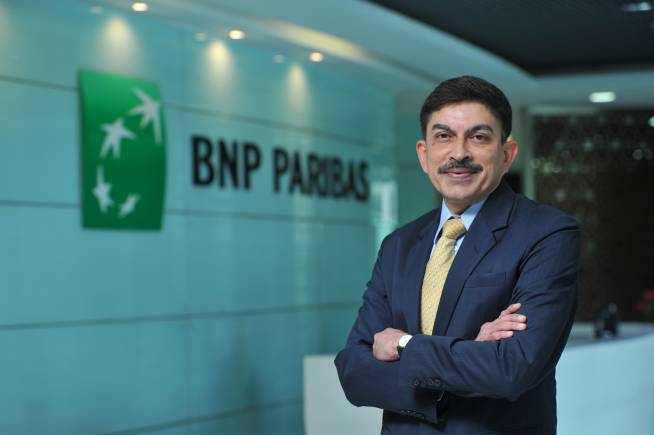Depending on investors’ risk and reward objectives, we would recommend some exposure to gold as it is a hedge against geo-political risks and financial instability.
Welcoming initiatives that could enhance the growth of the mutual fund industry while safeguarding investors’ interest at the same time, Himanshu Mehta, MD and CEO, BNP Paribas Wealth Management, says he believes SEBI’s decision to divide mutual funds into 5 broad categories is a positive move from a long-term perspective.
In an interview with Moneycontrol’s Hiral Thanawala, Mehta talks about opportunities in the market, assets he thinks are safe and much more. Following are edited excerpts of the interaction…
Q: Where do you see the market heading? Which events do you think are most likely to disrupt India’s growth?
A: Globally, we are entering into a phase of tightening monetary policy that could have a negative impact on the emerging markets.
We expect quantitative easing in the US, to come to an end. On the other hand, there could be some asset purchasing activities by the European Central Bank and Bank of Japan. Then, there are geopolitical factors such as the possibility of a trade war between USA and China, which may not augur well for the markets.
On the domestic front, elections in three major states followed by the general elections in 2019 will have a large impact on the markets. Indian stock markets are unlikely to give phenomenal returns as we saw in 2017, but we expect markets to remain volatile.
Other factors to watch for are inflation trajectory and the RBI policy stance, managing of non-performing assets by banks, and high fiscal deficit that could weaken bond markets further. GST collections have been a challenge, except for April 2018 data, and if that continues, it could impact the revenue collections. This may force the government to cut down on expenditure, in turn hampering growth.
Q: What are the current trends in wealth management?
A: We observe an increasing sophistication in client’s needs and expectations as they look for more bespoke solutions across investments including a growing interest in estate planning and family governance solutions. Credit and structuring solutions remain important for the clients seeking business growth and expansion.
We also see a greater adoption of technology across the board in the banking industry given the imminent transfer of wealth and a generation of younger, technology savvy clients. There is a growing appetite for impact investments avenues, especially among the next generation clients who generally are more involved and vocal.
The wealth management industry in India has seen many foreign players exit in the past few years and the competition among institutional players now is mainly between local and independent advisors.
Q: What are your wealth management offerings and your USP?
A: We are part of a large, global institution with deep rooted history as a bank, and a wealth management presence in India for past 20 years. This has given us a competitive advantage to serve our clients here.
Our “One Bank” approach is a key differentiator as we bring together resources of the entire group together to address the varying needs of the client. We provide a comprehensive offering including business owners advisory and investment, financing and wealth planning solutions. Our goal is to deliver a model that is relevant to our clients.
Q: Do you think gold is still a safe haven asset against inflation?
A: Depending on investors’ risk and reward objectives, we would recommend some exposure to gold as it is a hedge against geopolitical risks and financial instability. It is also a hedge against inflation and a depreciating rupee, which has a positive impact on gold prices. For the coming 6-12 months, we have a positive view on gold and our expected trading range is $1,200-$1,500 (per ounce).
Q: Do you recommend investing in life insurance policies?
A: Life insurance is not for investing. Insurance has to be looked at purely as a risk cover, where providing financial security is a key primary objective and potential returns remain secondary. Since our clients are predominantly large families, it would be probably less relevant for their needs.
Q: Where do you think bond yields are headed?
A: The RBI has continued to calibrate the future course of rate action dependent on headline inflation trajectory and GDP growth data. GST collections need to be closely tracked and the strength seen in April 2018 collections needs to sustain. Therefore, we are likely to see volatility in the market.
There are considerable uncertainties in the unfolding fiscal dynamics, minimum support price (MSP) announcements, bank credit demand and global developments. This is expected to keep the bond yields range bound till further clarity emerges.
For the long term yields to move any lower, markets would be looking at RBI to provide series of open market purchases of upcoming bond issuances. While the May 2018 open market operation (OMO) provided some relief in bonds, markets are expecting the RBI to provide guidance on future OMOs. Also, higher borrowings in the second half of FY19 could keep pressure on yields.


